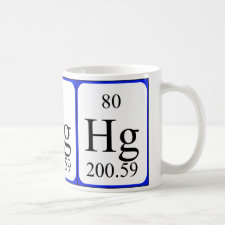
Authors: Dakova I, Karadjova I, Georgieva V, Georgiev G
Article Title: Ion-imprinted polymethacrylic microbeads as new sorbent for preconcentration and speciation of mercury.
Publication date: 2009
Journal: Talanta
Volume: 78
Issue: (2)
Page numbers: 523-529.
DOI: 10.1016/j.talanta.2008.12.005
Alternative URL: http://www.sciencedirect.com/science/article/B6THP-4V3HF71-1/2/3f751e83b4c18e8b8086dc23abfd2810
Abstract: Metal ion-imprinted polymer particles have been prepared by copolymerization of methacrylic acid as monomer, trimethylolpropane trimethacrylate as cross-linking agent and 2,2'-azobisisobutyronitrile as initiator, in the presence of Hg(II)-1-(2-thiazolylazo)-2-naphthol complex. The separation and preconcentration characteristics of the Hg-ion-imprinted microbeads for inorganic mercury have been investigated by batch procedure. The optimal pH value for the quantitative sorption is 7. The adsorbed inorganic mercury is easily eluted by 2ámL 4áM HNO3. The adsorption capacity of the newly synthesized Hg ion-imprinted microbeads is 32.0áμmolág-1 for dry copolymer. The selectivity of the copolymer toward inorganic mercury (Hg(II)) ion is confirmed through the comparison of the competitive adsorptions of Cd(II), Co(II), Cu(II), Ni(II), Pb(II), Zn(II)) and high values of the selectivity and distribution coefficients have been calculated. Experiments performed for selective determination of inorganic mercury in mineral and sea waters showed that the interfering matrix does not influence the extraction efficiency of Hg ion-imprinted microbeads. The detection limit for inorganic mercury is 0.006áμgáL-1 (3σ), determined by cold vapor atomic adsorption spectrometry. The relative standard deviation varied in the range 5-9 % at 0.02-1áμgáL-1 Hg levels. The new Hg-ion-imprinted microbeads have been tested and applied for the speciation of Hg in river and mineral waters: inorganic mercury has been determined selectively in nondigested sample, while total mercury e.g. sum of inorganic and methylmercury, has been determined in digested sample
Template and target information: mercury ion, Hg(II), Hg(II)-1-(2-thiazolylazo)-2-naphthol complex
Author keywords: solid phase extraction, Ion-imprinted polymer, Hg, Inorganic mercury, Cold vapor atomic absorption spectrometry



Join the Society for Molecular Imprinting

New items RSS feed
Sign-up for e-mail updates:
Choose between receiving an occasional newsletter or more frequent e-mail alerts.
Click here to go to the sign-up page.
Is your name elemental or peptidic? Enter your name and find out by clicking either of the buttons below!
Other products you may like:
 MIPdatabase
MIPdatabase









